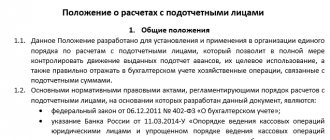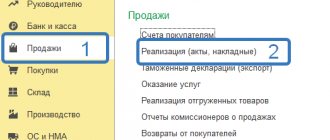What is simple
Downtime occurs when a company is forced to stop operations for a while.
Downtime may result from organizational, technical or economic reasons. This may affect the entire company, a specific department, or some employees depending on their positions and job characteristics. In 2021, many businesses were idle due to coronavirus quarantine measures. To formalize downtime, the manager issues an order. The procedure for paying for downtime is prescribed in Art. 157 Labor Code of the Russian Federation. Apart from the definition of downtime and payment rules, the legislation does not prescribe anything else.
How is payment for forced downtime caused by the employer calculated?
→ → → Current article Downtime is a way to maintain employees and production during the suspension of operations.
It is one of the most unpleasant cases for both the employee and the employer. The company suffers losses, and employees receive incomplete wages.
When declaring downtime, many questions arise, which we will try to consider. According to Article 72.2 of the Labor Code of the Russian Federation (LC RF), downtime is a temporary stoppage of a company’s work, the reasons for which may be problems of an organizational, technical, technological or economic nature. Thus, the problems due to which you can declare downtime can be different:
- shortage of components;
- equipment malfunction, etc.
- a sharp or gradual drop in demand for a manufactured product;
Also, during a crisis period, an employer may encounter economic difficulties that impede the operation of the enterprise.
How to arrange a simple
Step 1. If downtime concerns one employee: for example, his equipment has broken down or he has run out of materials for work, the employee notifies management about this. There is no written form of such notification, so the employee reports in free form: orally or in a memo.
If the downtime affected an entire structural unit, its manager needs to draw up a report and describe in it the reasons for the downtime and its features. There is no special form either; draw up a document in free form.
If the entire company is idle, the manager knows about it without memos.
Step 2. Having learned about the downtime from an employee or independently, the manager issues an order. It describes:
- the reason for the downtime and its type - due to the fault of the employee, employer or for reasons beyond their control;
- downtime;
- employees and departments subject to the downtime order;
- do employees need to be at their workplace during this period or should they not visit the company’s premises;
- payment order.
If the end date of the downtime is unknown, you can indicate this in the order, for example, in the wording “until the order of the regional governor to cancel the high alert regime.”
In an order with an open end date for downtime, you can write:
- conditions for ending downtime;
- method of notifying employees about the resumption of work.
Send the order to employees by email or show them the order against signature.
Keep records of exports and imports in the Kontur.Accounting web service. Simple accounting, payroll and reporting in one service
Step 3. If the entire company is idle, the manager must inform the employment service within three working days after issuing the order (Clause 2 of Article 25 of the Law of the Russian Federation of April 19, 1991 No. 1032-1 “On Employment of the Population”). There is also no single form for this, although some regions establish one: this is often done on the websites of the Employment Services by filling out an online form. Typically, in a notice of suspension of work, entrepreneurs report:
- reason for downtime;
- start date;
- if the duration is known, the end date;
- number of employees affected by downtime.
If you do not submit information to the Employment Service, you may receive a warning or a fine (Article 19.7 of the Administrative Code). The fine is up to 500 rubles for officials and up to 5,000 rubles for an organization.
How to pay for downtime
Downtime caused by an employee is not paid. And due to the fault of the company or for reasons beyond the organization’s control (for example, the same coronavirus) you will have to pay.
Downtime due to independent reasons is paid in the amount of ⅔ of the employee’s salary. For calculations, not the monthly salary is taken, but the salary calculated from downtime (Part 2 of Article 157 of the Labor Code of the Russian Federation).
Downtime due to reasons beyond the control of the organization and the employee, pay in an amount no less than 2/3 of his tariff rate (salary), calculated in proportion to the downtime. Such rules are established by part 2 of article 157 of the Labor Code.
If an employee works on an hourly basis, the salary for the month in which there was downtime is calculated using the formula:
Salary = Hourly Rate * Normal Hours + ⅔ * Hourly Rate * Idle Hours
If the employee is on a daily wage, calculate the salary using the formula:
Salary = Daily rate * Days of normal work + ⅔ * Daily rate * Days of downtime
If the employee is on a monthly salary, calculate the salary using the formula:
Salary = Salary / Number of working days * Days in normal mode + ⅔ * Salary / Number of working days * Downtime days
If the downtime lasts for the entire month, the first part before the addition sign simply disappears from the formulas.
With piecework payment, you will have to calculate the average daily or hourly rate of earnings and calculate payment for downtime days, multiplying this amount by ⅔.
EXAMPLE No. 2
The employee demanded payment for 7 hours on 05/20/2016 and 3.83 hours on 05/21/2016 as downtime. The worker explained that at the specified time, the excavator he was driving was idle due to a malfunction of the hydraulic fluid cooling fan, and therefore he was unable to perform his work function.
However, the employer did not declare or register the downtime, and did not keep any records of this time. As follows from the transport information provided by the employer, the excavator on which the worker worked was being repaired at that time.
Considering these claims of the employee, the court came to the following conclusions.
According to the norms of the labor legislation of the Russian Federation, the employer is obliged to provide employees with work stipulated by the employment contract, provide them with equipment, tools, and other means necessary for them to perform their labor duties, and pay employees.
In accordance with Part 1 and Part 4 of Article 157 of the Labor Code of the Russian Federation, downtime due to the fault of the employer is paid in the amount of at least 2/3 of the employee’s average salary. The employee must inform his immediate supervisor or another representative of the employer about the beginning of downtime caused by equipment breakdown and other reasons that make it impossible for the employee to continue to perform his job functions.
Important!
There was no objective data confirming the occurrence of downtime or its documentation, and therefore these actions cannot be classified as downtime. And for this reason, the court rejected arguments about the need to pay for downtime, based on the amount of 2/3 of average earnings.
As the court noted, on the above days and hours, during the repair of the excavator, the employee fulfilled his job duties as provided for in the employment contract and local documents of the company. Taking into account the above, these shifts must be paid by the employer based on the employee’s average earnings (Decision of the Kiselevsky City Court (Kemerovo Region) dated December 16, 2016, No. 2-2672/2016).
If, by introducing downtime, the employer pursues the goal of minimizing wages during the period of layoffs and in the absence of documentary evidence of the need to introduce downtime, the court will declare such downtime illegal (Appeal ruling of the Sverdlovsk Regional Court dated July 6, 2016 No. 33-11505/2016) .
COLLECTION OF ADDITIONAL PAYMENT FOR COMBINING POSITIONS
Important!
By issuing an order to declare downtime during the period of notice to workers about the upcoming dismissal under clause 2, part 1 of Art. 81 of the Labor Code of the Russian Federation, the employer actually pursued the goal of minimizing its costs for paying for their labor, which is a violation of labor legislation and, accordingly, such downtime is illegal (Decision of the Leninsky District Court of Ufa (Republic of Bashkortostan) dated November 24, 2016 No. 2 -6941/2016, Michurinsky District Court (Tambov region) dated October 26, 2016, No. 2-846/2016).
How to take into account downtime during the coronavirus epidemic
In 2021, when registering downtime due to a high-alert regime, justify the suspension of work in the order. If the company cannot send employees to work remotely, the order should prohibit their presence at the workplace. How you write down the justification for the downtime and determine whose fault the downtime is, determines how it will be paid further.
If your company is subject to a presidential decree on non-working days with pay, then it is better not to introduce a simple one - you will have to comply with the rule on maintaining pay. If you introduce downtime, justify it on economic grounds, but be prepared to defend your position in court if disputes arise with employees or the labor inspectorate.
For personnel records, payroll and other payments, and employee reporting, use the Kontur.Accounting service. Here you can easily maintain accounting and tax records, send reports via the Internet, view management reports, use electronic document management and other accounting tools. The first two weeks are free for all new users.
Downtime due to the fault of the employer: we reflect payments to employees in accounting
Accounting, taxation, reporting, IFRS, analysis of accounting information, 1C: Accounting
- Accounting and Taxation
04/08/2013 subscribe to our channel Experts from the GARANT Legal Consulting Service Svetlana Ovchinnikova and Sergey Rodyushkin talk about how to reflect in the organization’s accounting the costs of paying employees for downtime due to the fault of the employer, if products were not produced during the downtime.
We recommend reading: Rental agreement for an apartment with permanent registration
In February, there was a downtime in production due to a lack of orders from customers (due to the fault of the employer). During the downtime, employees were paid 2/3 of their average earnings. How to reflect these payments to employees in accounting in the absence of production?
In accordance with part three of Art.
72.2 of the Labor Code of the Russian Federation, downtime is understood as a temporary suspension of work for reasons of an economic, technological, technical or organizational nature.
Forced absenteeism due to the fault of the employer under the Labor Code of the Russian Federation (payment)
> > Tax-tax May 22, 2021 Forced absenteeism due to the fault of the employer is not separately identified by the Labor Code of the Russian Federation and does not contain a definition of such an act. This article summarizes the provisions of the Labor Code and related regulations, which allow us to get an idea of what forced absenteeism is and what consequences it entails.
What is forced absenteeism?
The Labor Code of the Russian Federation does not define the concept of “forced absenteeism”.
In practice, either the labor inspectorate or the court, at the request of the employee, examines the circumstances of the dismissal and decides whether the absence was forced due to the fault of the employer.
The concept of “forced absenteeism” can be defined as a situation where an employee could not perform his duties due to the fact that the employer violated legally established requirements for labor relations with this employee.
In other words, forced absenteeism is always associated with a violation of the Labor Code of the Russian Federation by the employer (see Resolution of the Plenum of the Supreme Court of the Russian Federation “On the application by courts of the Labor Code of the Russian Federation” dated March 17, 2004 No. 2)









